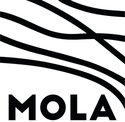Cuxton, Kent - Integrated Site Report
Museum of London Archaeology, 2009. (updated 2017) https://doi.org/10.5284/1044805. How to cite using this DOI
Data copyright © High Speed 1 unless otherwise stated
This work is licensed under the ADS Terms of Use and Access.
Primary contact
Stuart
Foreman
Senior Project Manager
Oxford Archaeology (South)
Janus House
Osney Mead
Oxford
OX2 0ES
UK
Tel: 01865 263800
Fax: 01865 793496
Resource identifiers
- ADS Collection: 2421
- DOI:https://doi.org/10.5284/1044805
- How to cite using this DOI
Introduction
As part of an extensive programme of archaeological investigation carried out in advance of the construction of the Channel Tunnel Rail Link (CTRL), the Museum of London Archaeology Service was commissioned to undertake the detailed excavation of an Anglo-Saxon cemetery at Cuxton in Kent (centre at OS NGR 572000 167350) following desk-based assessment and trial trenching. In the course of the excavation a concentration of later prehistoric archaeological features was also exposed and recorded. The excavation was carried out between July 1999 and September 1998, under the project management of Rail Link Engineering, on behalf of Union Railways (South) Limited (a subsidiary of London and Continental Railways).
Two principal phases of activity were recorded at the site: Traces of an early-middle Iron Age settlement comprised evidence for a possible hut within an enclosure and a number of large pits.
The Iron Age site was overlain by an Anglo-Saxon cemetery, in use from c AD 580 to c AD 700. The cemetery exhibited a mix of 'pagan' and Christian features. For example, the prominent position of the cemetery on a terrace overlooking the River Medway, perhaps overlooking the settlement, and the inclusion of grave goods with some of the interments, being 'pagan' characteristics. On the other hand the grave alignments, which tend towards an east-west orientation, and the inclusion of two workboxes/reliquaries with Christian symbols attest to Christian influence.
There were nine weapon burials, all with spears, and four of these also had shields. Thirty knives were recovered, but only one was close to the typical length of a seax. Five graves had no accompanying artefacts, though one of these had been disturbed by metal detectorists prior to excavation. The majority of the finds recovered from the graves are thought to have originated in Kent, two of the burials containing Kentish type triangular buckles. The distinctive penannular ditches around 11 of the graves also appear to be a Kentish phenomenon, though they do occur elsewhere in southern England.
The fieldwork events covered by this report are:
- Cuxton Anglo-Saxon cemetery (ARC CXT98) - Excavation
- Watching Brief Package Area 350 (ARC WB350/50+000-51+000) - Watching Brief






